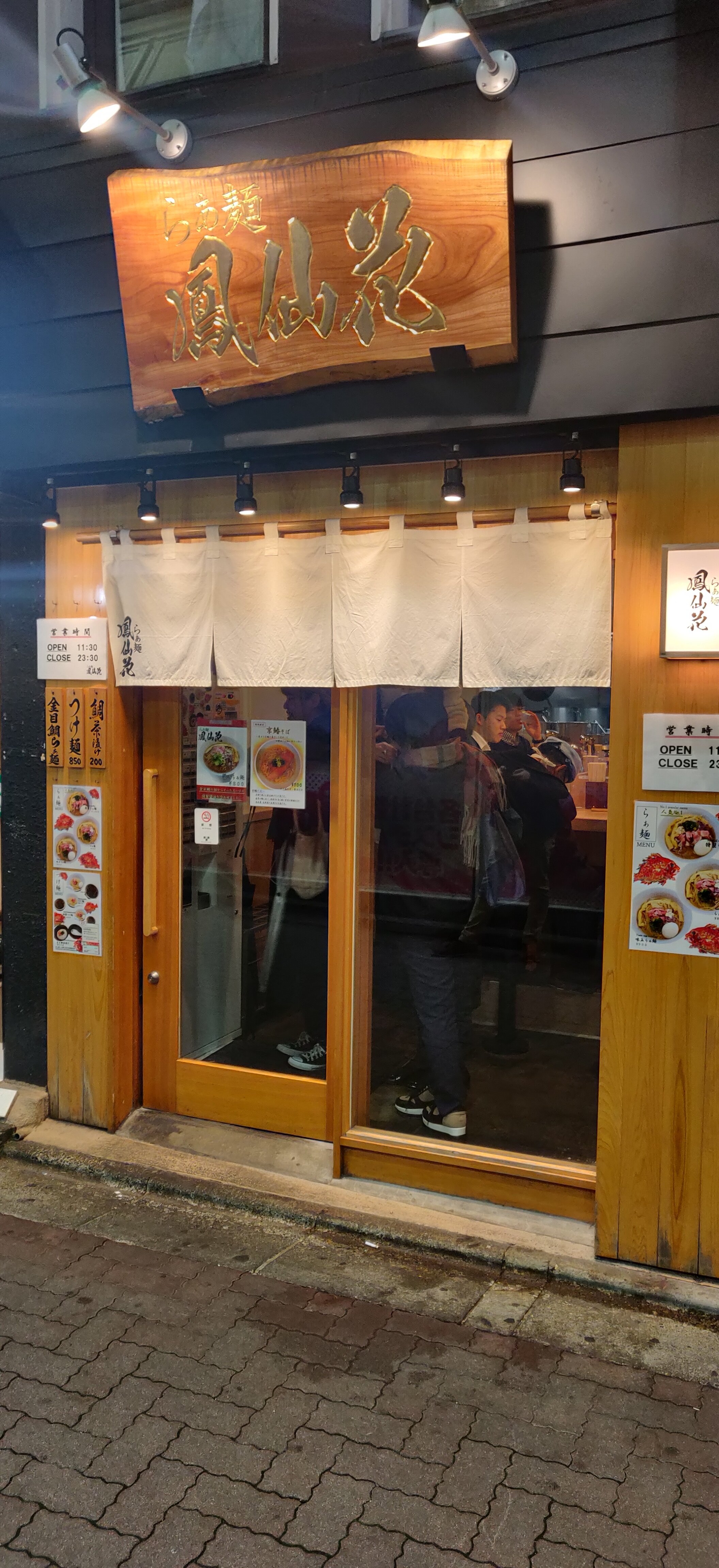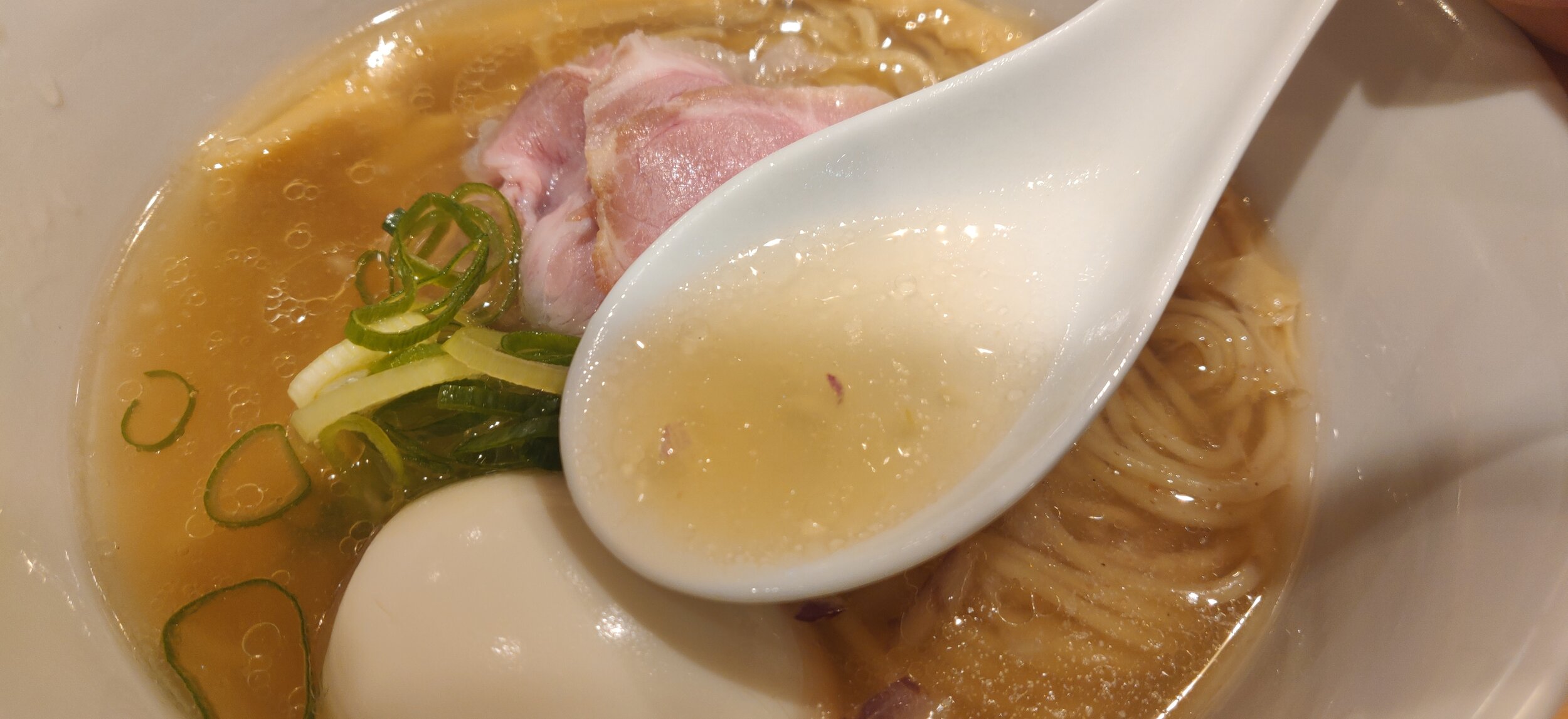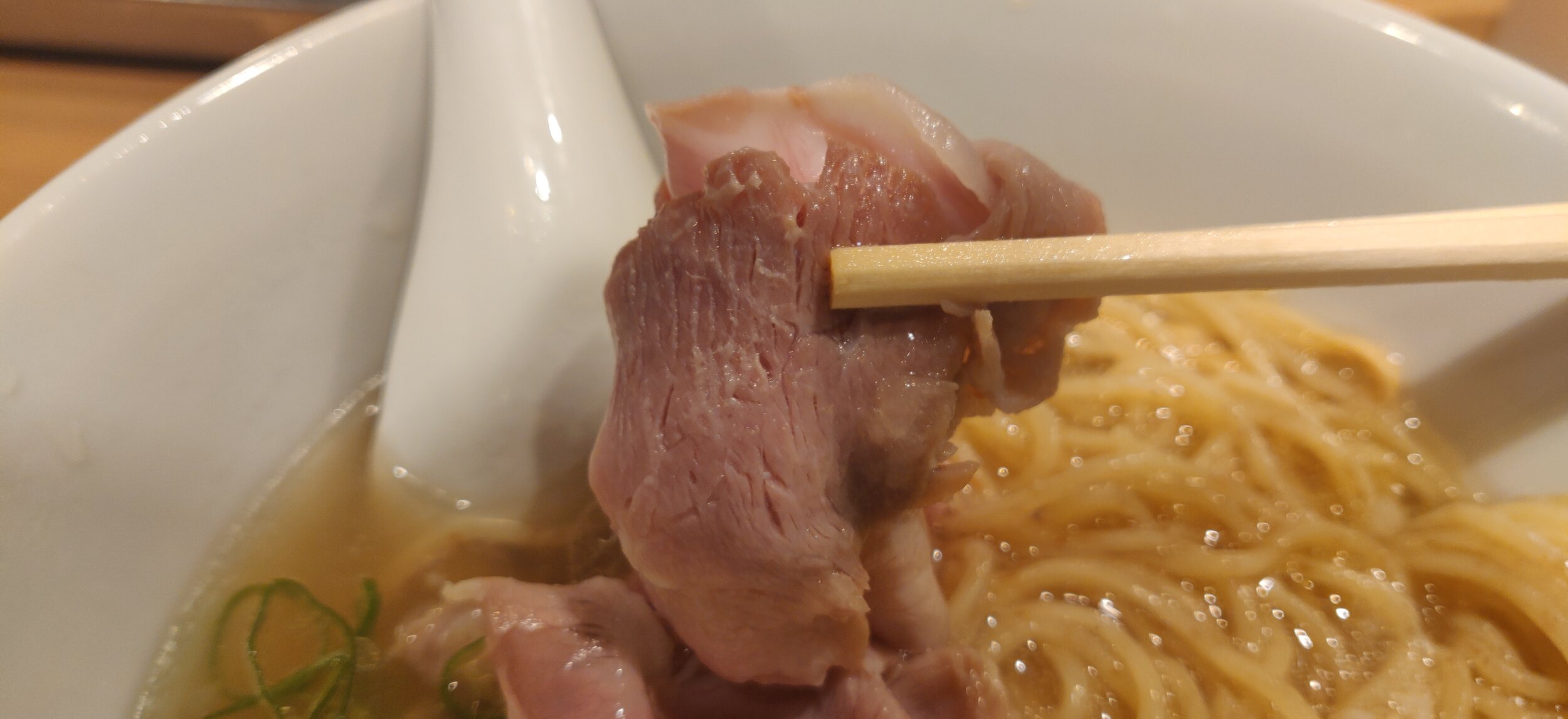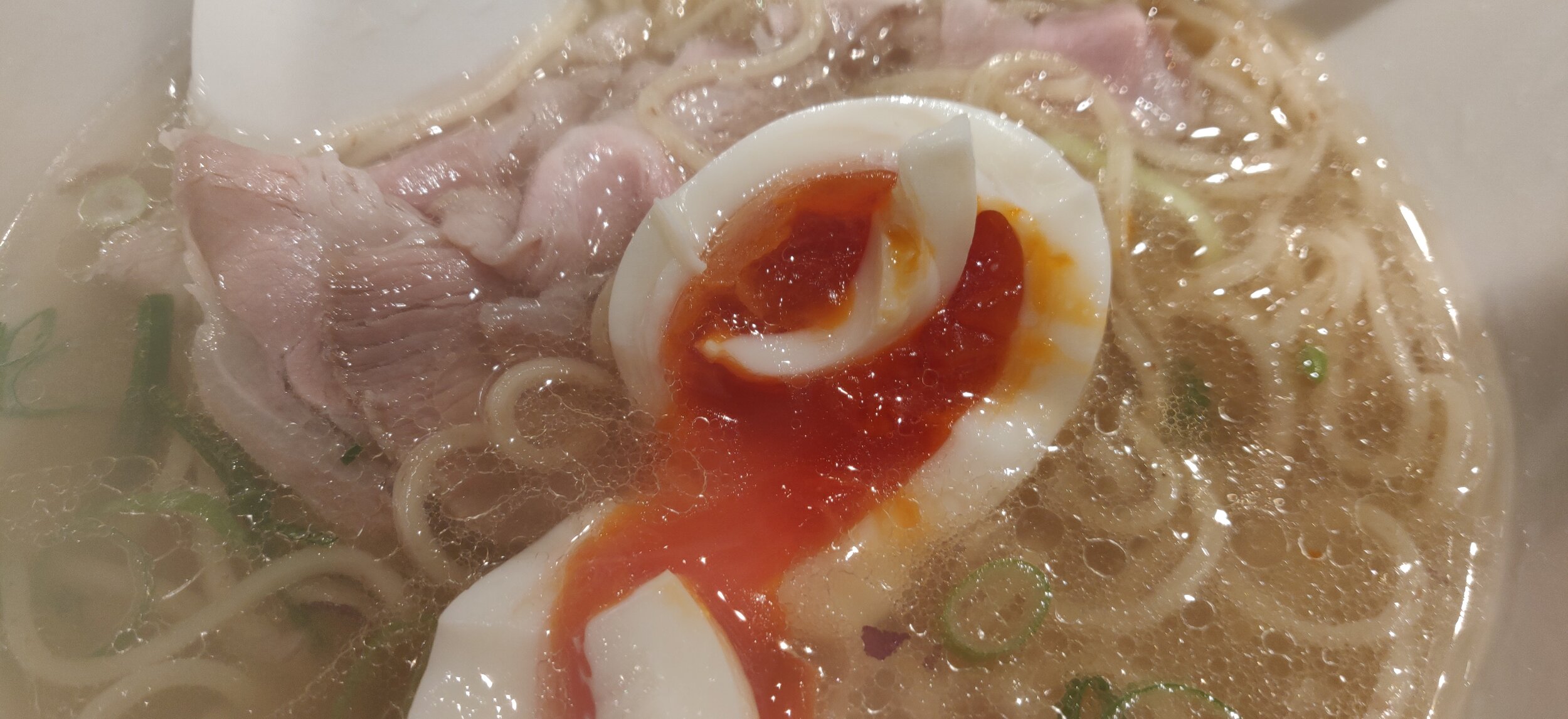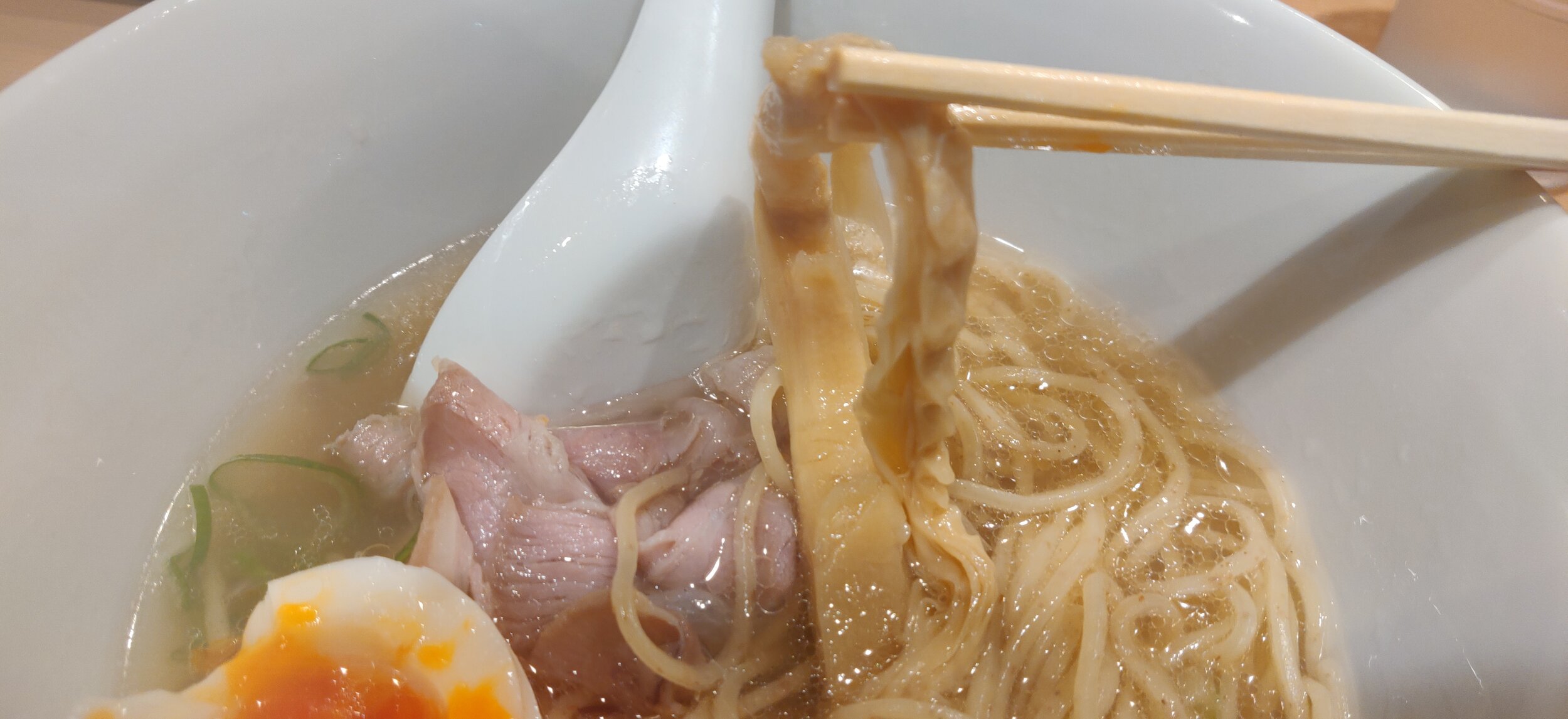Housenka (鳳仙花); Gold Standard of Fish Broth Ramen, Shinjuku, Japan
So it’s probably obvious to my long time instagram followers, but one of my favorite ramen shops in Shinjuku is a New Wave Tokyo Chicken Shoyu Ramen restaurant called Ramen Hayashida right outside the South exit of the JR Shinjuku station. They serve up some of the best Chicken Shoyu Ramen in Tokyo and is loved within the ramen community. In a short two year span, they’ve gone on to make the Tabelog Top 100 Ramen list, the Michelin Guide as a Bib Gourmand, and a variety of other accolades allowing them to start new ramen brands throughout Tokyo. One of their most highly regarded off shoot ramen restaurant is located a short walking distance from Hayashida. Housenka, located just a short walk from the Seibu Shinjuku station, is serving up some fantastic fish broth based ramen and it really is out of this world. I’ll have to make some repeat visits, but its already on my radar for top 5 fish based ramen I’ve ever had.
Housenka is located just around the corner of the small street between the Pachinko parlor and McDonald’s in front of the Seibu Shinjuku station. It’s hard to miss as it’s one of the nicer looking ramen restaurants and if you’ve ever been to Hayashida, the exteriors looks exactly the same. However, unlike Ramen Hayashida, Housenka opens without break from 11:30 am to 11:30 pm. As far as I can tell, Housenka is open all week, but they’ll likely have certain holidays like New Year’s. For the most part, you’ll find them open, but just be weary if it’s a public holiday in Japan. If you find a line outside, just sit tight and wait until a staff comes out to ask you to buy tickets. If you see seats open, just pop in and purchase the tickets at the machine before sitting down. Unfortunately, while the menu outside is in English, the ticket machine as in Japanese. I did my best to translate them for here. Anyways, the menu here is similar to the one in Hayashida, very plain and simple. Not a ton of frills here, just three varieties of ramen in varying topping options. First up is their regular ramen located on the top left and moves to one with a soft boiled egg directly to the right of it, and then the Tokusei version including all of the toppings to the right of that. The lone button located on the row below is for Kaedama, or extra noodle servings, which comes separately after you finish your initial bowl of noodles. On the third row is their tsukemen, Ajitama (soft boiled egg) Tsukemen, and Tokusei Tsukemen, with an option for Oomori, or large noodle portion right below. On the right of that is the Gentei version, or specialty ramen. I didn’t find one on my visit here, but if it is available, it’s likely to be well advertised all around the shop so keep an eye out to see what it might be. Below the Tsukemen option is the rice option of grilled fish over rice and just plain bowl of rice. Below that is the extra toppings of char siu, Ajitama, and Menma Bamboo shoots. Finally the last row is a button for beer. I opted for the Ajitama Ramen as it’s their most popular item and bought my ticket before taking my seat at the counter which sits roughly 12 customers. If you’re in line, not to worry. Most customers were in and out in less than 15 minutes as they prepare the ramen quite quickly so the wait shouldn’t be too bad.
As you can see, the ramen looks very similar to the one at Hayashida. The core spirit of Hayashida is still very evident in the bowl, but the flavors are a complete 180 degree change. Broth here is made with Kinmedai, or Golden snapper, which is one of the most flavorful fish you can get here in Japan. My title for this review is a direct reflection of the fish name as it roughly translate to Golden Eye Snapper, and it really does put forth a Gold Standard for other fish based ramen restaurants. Anyway, on my visit, I arrived at around 7:30 pm and sat immediately. My bowl took roughly five minutes to prepare after handing my ticket and was served pipping hot. Pictured above was my order of Ajitama Ramen. My bowl came adorned with thinly slices, sous vide pork char siu, thinly diced red onions, green scallions, bits of grilled Kinmedai fish flakes, a long stand of menma bamboo shoots, and my salt flavored soft boiled egg. The bowl itself was both visually and aesthetically very pleasing as the folded noodles presents a clean canvas for the vibrant topping colors. The aromas permeating to my nose were simply irresistible and I had a difficult time keeping myself from digging in to the bowl before taking my photos.
Flavor profile for Kinmedai can vary depending on how it is prepared. As a braise, or when grilled, the meat imparts some delicate, but rich oils making for an incredibly flavorful and flaky meat. As a sashimi, the meat has a nice texture to it, but the lack of heat releasing the oils makes it a bit one dimensional. Housenka, as not to waste the delicious oils of the Kinmedai, slightly grills the meat and carcass before simmering in a stock pot for the soup. What results is a light, but oily, transparent soup that envelopes your entire mouth as soon as the first spoonful hits your lips. The tare seasoning is a Shio, or salt, base and the combination of the two reminds me the flavors of a slightly salted grilled fish, right at the beach. The aromas from the sea salt soothes my soul and the flavors just take me away to a relaxing seaside. I might sound a bit much, but honestly Housenka was on par with Mengyo in Kinshicho for top fish based ramen I’ve ever had.
Noodles, soft boiled egg, and menma bamboo shoots here at Housenka did reek of the Hayashida vibes though as it was pretty much exactly the same. I wouldn’t be surprised if they bring in these ingredients from the same place. The only thing different was the flavor profile of the egg and menma bamboo shoots which reflected the Shio seasoning tare, as opposed to the soy sauce, shoyu seasoning of Hayashida. However, as you can see from the color of the egg yolk, the egg is cooked perfectly just like it is in Hayashida, and the speckled wheat flour of the noodles are vibrant and clearly present. I would say though that the noodles were slightly softer than what I’m used to at Hayashida. Not sure if there was a reason for this, or if they just overcooked my noodles on my visit, but it was noticeably different. The stark difference in topping choice however is the diced red onions, thinly sliced pork char siu, and the flaky, girlled Kinmedai bits which sat atop the noodles.
The char siu here reminds me more of a sliced deli ham than a pork char siu, but I think the subtleness of the pork slices pair with the essence of this bowl than the one prepared at Hayashida. Hayashida has some bold flavors and the chicken and shoyu combo is a strong punch to the palette. In order for the pork char siu to stand out, it does need a bit of leanness to counterbalance that chicken oil enriched soup at Hayashida. Here, while the Kinmedai is an oilier and fattier fish variety, it imparts nowhere near what a chicken broth would, so the flavors are way more subtle. In order to flow freely with the delicate flavors of the Kinmedai soup, the pork char siu seemed to need that subtleness as well and thus the choice for this style was perfect. Of course, then, to the side of the pork char siu laid the spoonful of flaky, grilled Kinmedai that was absolutely to die for. You get the oily hits on your tongue, while also experiencing the smoky aromas from the charcoal grill, and leave with the tender, melt in the mouth Kinmedai flesh that wash away with the soup in your mouth. I wish I had ordered the rice side dish so I could have more of this experience, but as I had another ramen shop to visit after, I had to resist. With all my phrase, might be hard to think I had any complaints, but one aspect did ring bells on my tongue. The red onions seemed a bit unnecessary when green onions were also sprinkled on top. It added a bit of acidity and bite to the bowl, but I personally felt like it was out of place. Acidity of the onions were a tad distracting from the other flavors of the ramen and I think I would have preferred without it.
All and all, I have to say, Housenka went above and beyond what I had expected from a second brand of Hayashida. I’m always a bit weary of different brand ramen shops, but the people over at Housenka really got that job done. While taking the spirit and culture of Hayashida, they created a completely different and unique soup type that holds up well on it’s own without the name backing. I can honestly say I’ll be back and I am strongly considering adding it to my Airbnb Ramen Tour shop list. Oh, also, this ramen trip was in collaboration with my buddy NamaJapanTV. Check his video out to hear my initial reaction of the shop, and the second shop we visited on this night.
